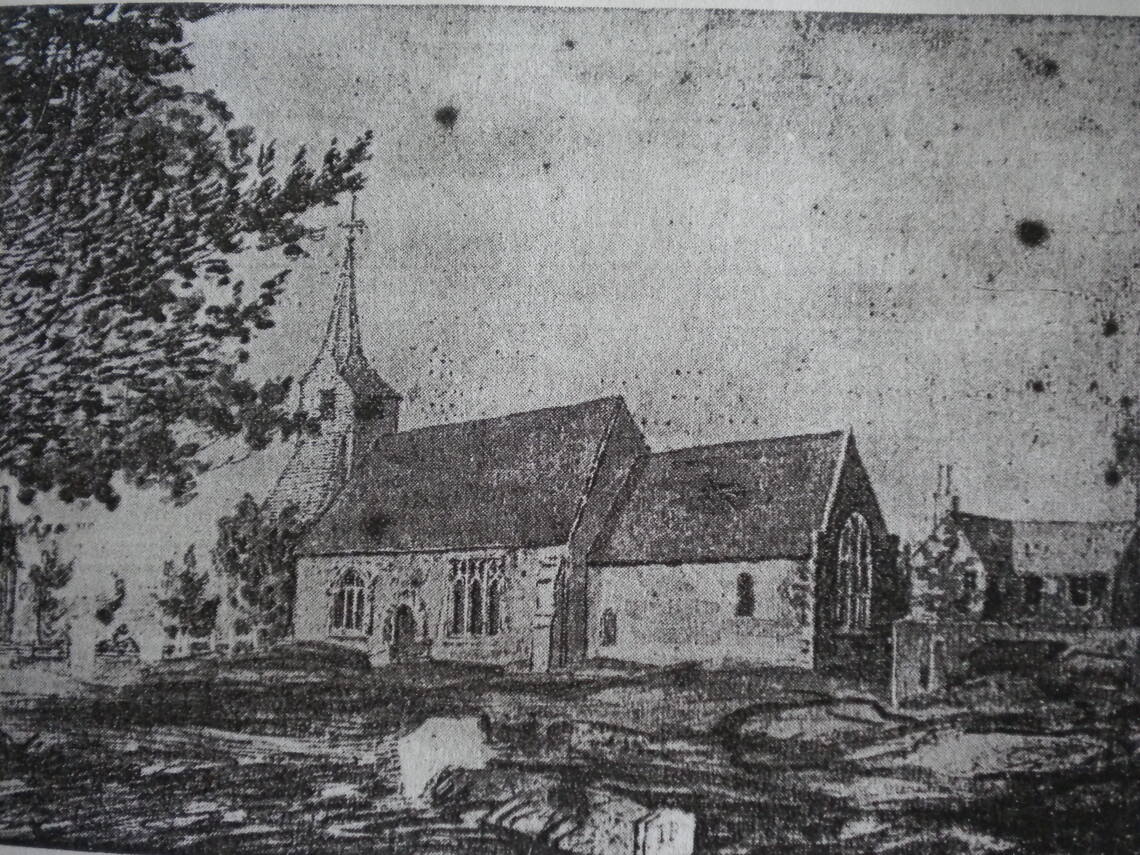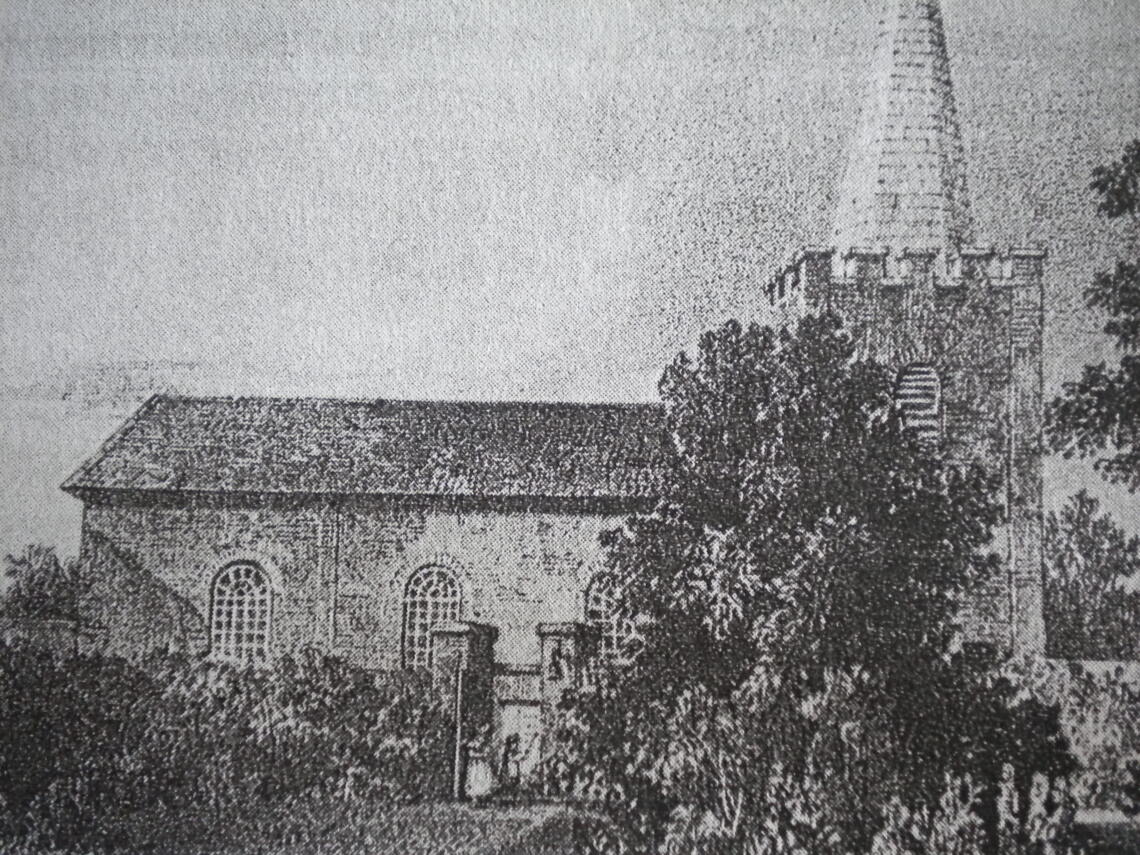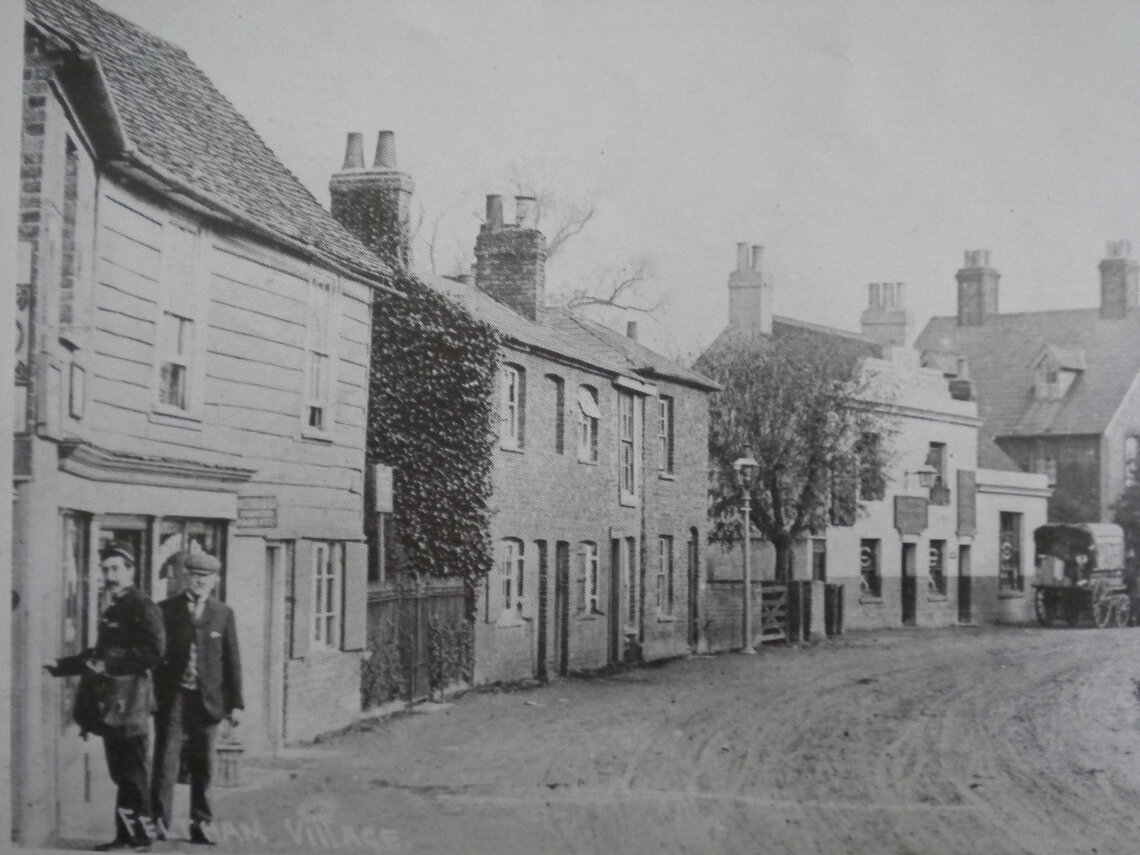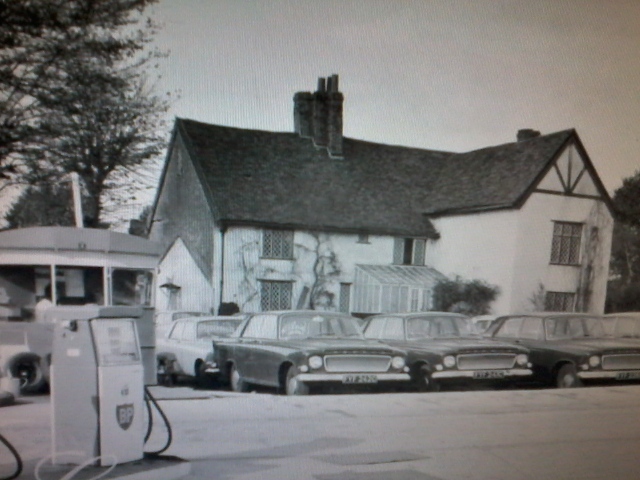
The original is a watercolour painting and shows the first church shortly before demolition


Feltham's recorded history commences with its entry in the Domesday Survey of 1086, where the earliest spelling of its place name - Felteha - appears. One derivation of the name Feltham is Feldham meaning a village in a field or on an open plain. Another derivation is from Felte (meaning soft or woolly leaved), which is the Old English plant name of mullein - genus verbascum. Later spellings of the place name were Feltesham in 1274, Felten in 1668 and finally by 1800 Feltham.
Anglo-saxon England was divided up into areas of administration that were called 'Hundreds'.
After the Norman conquest the Manor of Feltham was given to Robert, Earl of Mortain in Normandy and of Cornwall in England. Feltham Manor exercised none of the customary rights of a feudal manor as it was only a nominal title. Jurisdiction over Feltham was vested in the neighbouring manor of Kenyngton or Kempton. The Earl of Mortain's family held the manor until 1104, when it was forfeited to King Henry I, who gave it to Richard de Redvers. This family held it until, through the marriage of Joan, a member of the family, to Hugh de Burgh, it passed to the de Burgh family. De Burgh held the adjoining Manor of Kempton and in 1228 he passed both manors to King Henry III in an exchange of lands. From this time onwards Feltham manor becomes even more closely associated with Kempton.
Henry VIII annexed Feltham to the manor of Hampton Court, where it remained until 1631. In 1594 all franchises, privileges, emoluments, and hereditaments in Feltham were granted to Sir William Killigrew, with a lease of Kempton Manor and Park for eighty years. These passed to his son, Roger, and stayed with the Killigrew family until 1651. It seems likely that the manorial rights over Feltham died out at the end of the 17th century as no courts were held there after 1700.
This ownership did not affect the lands owned by the Crown, which in 1631 were granted to Francis, Lord Cottington. In 1634 a fire in the village destroyed Lord Cottington's manor house, together with thirteen dwelling houses and sixteen barns, causing a loss of approximately £5,000. Lord Cottington saw that his sixty tenants had food and shelter, whilst their properties and the manor house were rebuilt,

The manor house stood in the High Street on the site of Tesco's petrol station, across the street from Elmwood Avenue. It was demolished in 1966 for the rebuilding of the old Four Point Garage. An archaeological excavation of the site in 1966 failed to produce any evidence of an earlier medieval manor house.
In 1638 the Longford River was cut through Feltham on the instructions of King Charles I, to provide work for 'idle soldiers'. It branched off the river Colne at Longford and wound its way across Hounslow Heath to provide Hampton Court Palace and its ornamental fountains with a better water supply. It has had several names including the New River to distinguish it from the Old River, and the Duke of Northumberland's River (also man made). Other names were the King's, Queen's and Cardinal's River.
Lord Cottington supported King Charles I throughout the Civil War and in 1649 had his estates confiscated and passed to President Bradshaw. At the restoration of the monarchy in 1660 they were reclained by his newphew, Charles Cottington who sold them to Sir Thomas Chamber in 1670. Through the marriage of Chambers' granddaughter, Mary, the manor passed to Lord Vere Beauclerk, and then to his cousin, who in 1787 became the fifth Duke of St.Albans.
Both Feltham and Hanworth manors were in the same ownership from the 16th century until the beginning of the 19th century, when the sixth Duke of St.Albans sold off these manors. Feltham was purchased by John Fish, who owned the adjoining manor of Kempton Park. Once again Feltham and Kempton were under the same ownership. The manor of Feltham continued into this century but in the 1920's most of its rights and franchises were rescinded.
There were three other large estates in Feltham dating back to Norman times. One was called The Rye, and was included as part of the manor. It was situated to the east of Feltham Hill and in 1543 was divided into two parts. One called the Great Rye contained a barn, two closes and four acres of pasture and wood. The second estare was called Haubergers and was situated on the north side of the High Street between the manor house and St Dunstan's church. By 1674 it had become known as Feltham Farm. The third estate was known as Rectory Manor, and one of its early owners was the Crown. This was possibly the land given to the Hospital of St. Giles in the twelfth century. They held it until 1537 when as part of the dissolution of the monasteries it was ceded to the king. In the 17th century it passed to Francis, Lord Cottington, and thereafter the rectory and the manor had the same ownership.
